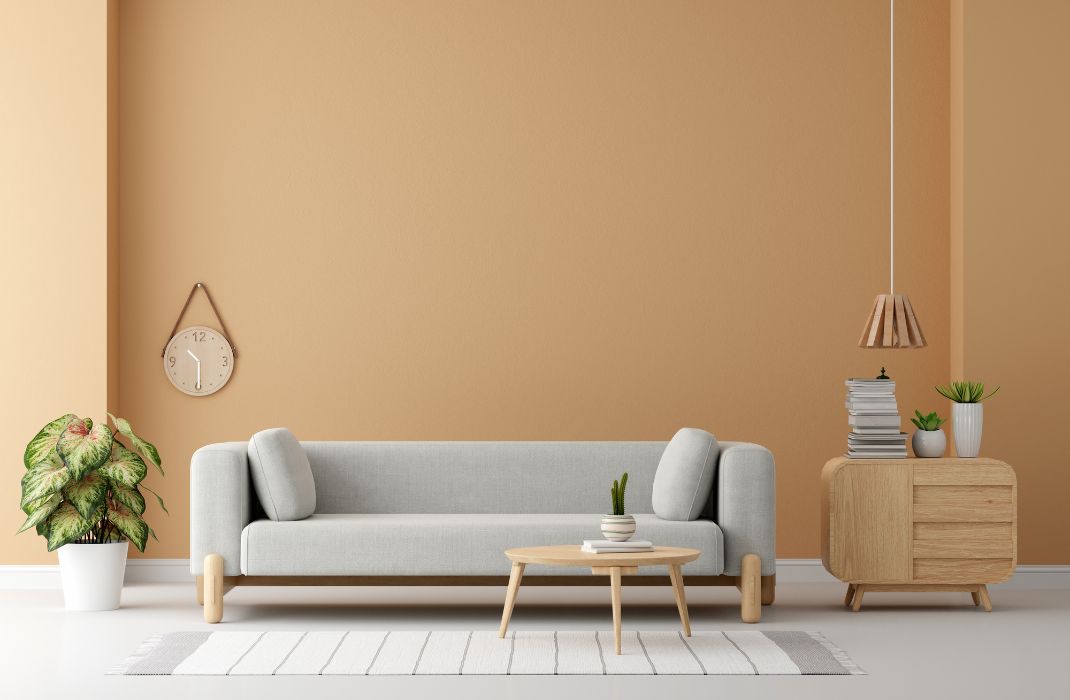
Introduction
Creating a comfortable and inviting living space is essential for turning a house into a home. However, many people are deterred by the misconception that furnishing a home is an expensive endeavor. In this article, we will dispel these misconceptions and provide you with practical tips and strategies to affordably furnish your home. By following these guidelines, you can transform your empty space into a cozy haven without breaking the bank.
Budgeting: Laying the Foundation
A crucial first step in affording the furnishings for your home is setting a realistic budget. By determining how much you can comfortably spend, you can avoid overspending and financial strain. It is important to differentiate between essential and non-essential items to allocate your funds wisely. Consider prioritizing necessary items such as beds, sofas, and dining tables before indulging in decorative pieces. Additionally, allocate funds for each room to ensure a balanced approach to furnishing your entire home.
Furniture Investment Strategies
When it comes to furnishing a home on a budget, prioritizing quality over quantity is key. Choosing long-lasting and versatile furniture pieces not only ensures durability but also minimizes the need for constant replacement. Instead of splurging on expensive designer brands, explore budget-friendly alternatives that offer similar aesthetics and functionality. This way, you can achieve the desired ambiance without the hefty price tag.
Another cost-effective approach to furniture shopping is exploring the world of second-hand items. Thrift stores, consignment shops, and online platforms can be treasure troves of affordable and unique furniture pieces. However, it is important to learn how to assess the quality and condition of used furniture to avoid purchasing items that won’t stand the test of time.
Creative DIY Solutions
If you’re feeling adventurous and looking to put your creativity to use, consider repurposing existing pieces to breathe new life into them. Give your old furniture a fresh look by refurbishing it with paint and fabric. Additionally, embrace DIY furniture projects and upcycling to create personalized and budget-friendly solutions. Building simple storage solutions or reimagining a piece of furniture can not only save you money but also add a touch of uniqueness to your home decor.
Strategic Shopping and Bargain Hunting
Timing your furniture purchases strategically can significantly impact your budget. Keep an eye out for clearance sales, seasonal promotions, and warehouse stores. These opportunities present ideal moments to snag great deals on quality furniture pieces. Online sites and apps can also be valuable resources for finding discounts and coupons, helping you save even more.
Renting or Borrowing Furniture
When you’re in need of furniture temporarily or want to experiment with different styles, short-term furniture rental options can be a cost-effective solution. Additionally, consider borrowing from friends or family who may have spare furniture pieces. The rise of community sharing platforms also offers opportunities to borrow furniture from others in your local area for short periods of time.
Smart Space Planning
Efficiently planning your furniture arrangement can make a significant difference in maximizing the available space in your home. Consider the layout of each room and opt for multifunctional furniture pieces that can serve multiple purposes. Choosing furniture with built-in storage solutions can further optimize space and minimize clutter, ensuring a visually appealing and well-organized home.
Finding Affordable Decor and Accessories
Decorating your home doesn’t have to be expensive. Thrift stores and bargain decor shops are excellent sources for finding budget-friendly and unique decorative items. Embrace DIY decor ideas and projects to add a personal touch without the high cost. Furthermore, affordable online marketplaces offer a vast selection of decor and accessories that won’t break the bank.
Negotiation and Haggling Tips
Don’t be afraid to negotiate prices when purchasing furniture. Skilled negotiation techniques can often result in lower prices or added benefits from sellers. Whether you’re navigating clearance sales or considering floor models, building rapport and establishing a friendly relationship with the seller can increase your chances of securing better deals.
Financing Options
Exploring furniture store financing offers can provide alternative payment methods with little to no interest. However, it’s important to compare these options with personal loans and credit cards to ensure you’re making the best financial decision. Understanding the pros and cons of lease-to-own programs can also help you gauge whether they suit your needs and financial situation.
The Power of Comparison Shopping
Researching prices and comparing different options is instrumental in finding the best furniture deals. Online tools that offer price comparison and customer reviews can assist you in making informed choices. Additionally, visiting multiple stores and physically experiencing the furniture can help you narrow down your preferences and secure the most affordable and suitable options.
Embracing Minimalism and Decluttering
One of the most cost-effective ways to furnish a home is by embracing minimalism. Simplifying your living space and decluttering not only reduces the need for excessive furniture but also creates a clean and organized environment. Incorporate minimalist design principles that focus on functionality and simplicity. Furthermore, consider donating or selling excess belongings to earn some extra cash.
Low-Cost or Free Interior Design Assistance
If you’re seeking professional advice on a budget, there are various options available. Utilize online design tools and virtual consultations to receive expert guidance without the hefty price tag. Alternatively, consider co-designing with friends or tapping into community design resources to benefit from collective creativity and ideas.
Sustainable and Eco-Friendly Furniture Choices
Incorporating sustainable and eco-friendly choices in furnishing your home not only benefits the environment but can also be cost-effective. Explore furniture made from eco-friendly materials and support practices that prioritize sustainability. Opting for second-hand furniture is another green choice that reduces waste and saves money. Additionally, consider supporting local artisans and craftsmen who produce unique and sustainable furniture pieces.
Maintaining and Upgrading Furniture on a Budget
To ensure the longevity of your furniture investment, implementing budget-friendly maintenance tips is essential. Proper care, such as regular cleaning and periodic inspections, can extend the lifespan of your furniture. Simple and affordable updates, such as changing knobs or reupholstering, can also breathe new life into outdated pieces and save you money in the long run.
Summary and Key Takeaways
Furnishing a home on a budget requires careful planning, prioritization, and creativity. By setting a realistic budget, prioritizing quality, exploring second-hand options, and utilizing strategic shopping techniques, you can create a cozy haven without breaking the bank. Embracing minimalism, finding affordable decor, and negotiating prices are additional strategies to consider. Remember to compare prices, take advantage of financing options, and seek cost-effective interior design assistance when needed. Lastly, prioritize sustainability and maintain your furniture to ensure long-lasting and affordable comfort in your home.







